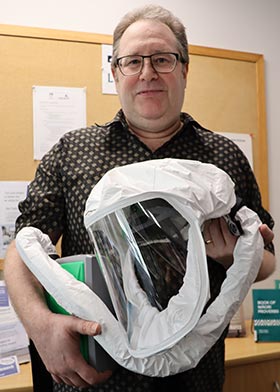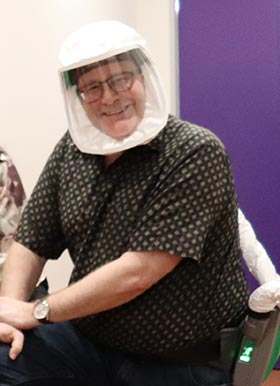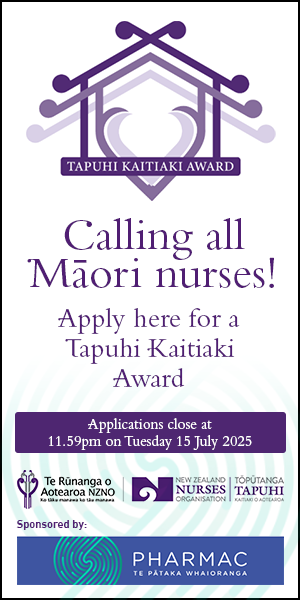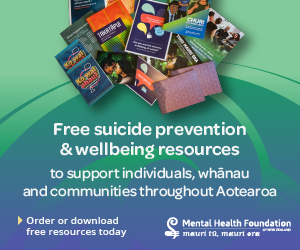
NZNO’s board has signalled its intent that the organisation be led by the best most up-to-date science in its response to the COVID-19 pandemic. It has done so with the adoption of the Global Nurses United (GNU) statement to the World Health Organization (WHO) and the John Snow Memorandum.1, 2
With this in mind, it’s important to understand why GNU (and so NZNO) is advocating for improved personal protective equipment (PPE), including powered air-purifying respirators (PAPR), for health-care staff working in areas where there are suspected or confirmed COVID-19 positive patients.
This is especially important for staff working in emergency departments (who will see emergent cases), and in managed isolation and quarantine facilities (MIF/MIQ).
Health and safety
Under the Health and Safety at Work Act, there is a hierarchy of processes to protect employees from a hazard in the workplace. This starts with eliminating the hazard. In this hierarchy, PPE is the final option, so an employer has to have exhausted other means of protecting workers from an occupational hazard. Obviously where the hazard is a virus, health-care workers must have appropriate PPE.3
Under law, PPE must be provided by the employer and they cannot charge you for it. You can provide your own (your employer should reimburse you for this) if it is your genuine choice and voluntary.
PPE must be:
- “suitable for the nature of the work and any risks associated with the work”
- “suitable size and fit and reasonably comfortable”
- “compatible with any other PPE the employee is required to wear or use”.
Employees must “receive information and training on how to correctly use, wear and maintain it”.
It must be used or worn as instructed and “should meet any industry-specific requirements or standards”.4, 5
In the case of the biological hazard SARS CoV-2 virus, a variety of organisations have made recommendations that have evolved as the science has. These organisations range from WHO, the Centers for Disease Control and Prevention (CDC) in the United States, the European Union Occupational Safety and Health Authority (EU-OSHA) and New Zealand’s Ministry of Health (MoH) and district health boards (DHBs).
In New Zealand, these recommendations are in the form of “guidelines” and advice, so unfortunately do not have the regulatory authority of an industry standard. Also, MoH and DHB advice hasn’t changed since July 2020. The MoH is still saying that transmission “occurs mainly through respiratory droplets generated by coughing and sneezing, and through contact with contaminated surfaces”.6
In this advice, the MoH recommends following contact and droplet precautions for probable and confirmed cases of COVID-19, and airborne precautions only when an aerosol-generating procedure is to be performed. The recommended PPE for contact and airborne precautions is “long sleeve impervious gown, gloves, eye protection and particulate respirator (N95/P2 mask)“.6
This advice, published on July 3, 2020, soon became outdated by the science when the WHO taskforce on infection control technical leader Benedetta Allegranzi acknowledged the airborne route in a press conference on July 7.7
There is also little evidence of transmission via surface contact. Research published in September found patient fomites and surfaces are not contaminated with viable virus.8 The CDC now states that: “Spread from touching surfaces is not thought to be the main way the virus spreads”.9
N95 v PAPR
According to MoH advice, an N95 respirator is recommended for aerosol-generating procedures. It is important to understand exactly what an N95 respirator is. So, what does N95 mean?
- N: This is the respirator rating letter class. It stands for “non-oil”, meaning that if no oil-based particulates are present, then you can use the mask in the work environment. Other masks ratings are R (resistant to oil for eight hours) and P (oil proof).
- 95: Masks ending in a 95 have a 95 per cent efficiency, meaning they screen out 95 percent of particles down to 0.3 microns in size. Masks ending in a 99 have a 99 per cent efficiency. Masks ending in 100 are 99.97 per cent efficient, which is the same standard as a HEPA (high efficiency particulate air) quality filter.
- 0.3 microns: The masks filter out contaminants like dusts, mists and fumes. According to the CDC, the mask will prevent particles or droplets down to a size of 0.3 microns from passing through. Because of turbulent airflow through the fibres, a properly-fitted N95 respirator can filter out particulates smaller than 0.3 microns, but how effective it is at this is unknown.10
However, N95 respirators are made for industry, not health care, and are mainly made to fit men.
However, N95 respirators are made for industry, not health care, and are mainly made to fit men. So the PPE we are given to wear is designed for nine per cent of the workforce. In a 2020 study by the University of Western Australia, it was found that N95 respirators fitted 85 per cent of women and that dropped to 60 per cent for Asian women.11, 12
PAPR sets provide integrated protection that can fit a wider range of staff, including those with a beard or glasses. Because PAPR sets have removable interchangeable filters, they can also provide a higher level of respiratory protection. Due to their reusability, PAPR sets also have significant cost and environmental benefits over disposable N95 respirators.13, 14
Size, aerosols and transmission

The SARS CoV-2 virus is between 0.125 and 0.140 microns in size. This doesn’t mean that a properly-fitting N95 respirator isn’t effective at reducing the wearer’s exposure. The key phrase, however, is “properly fitting”. The “one-size-fits-all” approach to PPE provision means that a significant proportion of the health-care workforce will not be protected because the provided equipment does not fit. Remember the employer is obligated under law to provide properly-fitting PPE.
MoH advice on only wearing N95s during aerosol-generating procedures and social distancing is based on a fundamental misunderstanding of droplet/aerosol behaviour. Depending on airflow conditions, many particles that would be classified as “large” (diameter >5 microns) can travel much farther than the “mythical” 1-2 metres distance, within which such particles are claimed to fall to the ground. So taking this into account, even large particles can also behave like traditional “aerosols”.
An article published in January 2021 in the Journal of Hospital Infection notes: “Although we do not yet have genotypic evidence that inhaled virus causes COVID-19 in humans, many outbreaks are difficult to explain other than inhalation of aerosolised SARS-CoV-2″.15, 16
Conclusion
PAPR is not only more effective, it is cheaper and more environmentally friendly than N95 respirators.
MoH advice needs to be updated to reflect the airborne transmission of COVID-19 and the increased risks posed by the emerging variants.
WorkSafe’s tool for selecting appropriate respiratory protection isn’t suitable in the case of biological hazard. But if you were working in a confined space (patient room) with a fine dust that, if inhaled, could cause serious harm, then the tool says you should be wearing a breathing apparatus.17
The question must therefore be asked: Is it because of cost or some other reason that employers do not provide better respiratory protection, despite their legal obligation to do so?
Simon Auty, RN, PGDip health informatics, is a theatre nurse with training in health and safety, and wears a mask every day at work. He is also a member of NZNO’s board of directors.
References
- Global Nurses United. (2020, Jan 30). Letter to World Health Organization director general (PDF, 300 KB).
- Alwan, N. A., Burgess, R. A., Ashworth, S., Beale, R., Bhadelia, N., Bogaert D., et al. (2020). The John Snow Memorandum.
- Worksafe. (2017). Risk management – managing your hazardous substances.
- Worksafe. (2018). Personal protective equipment – a guide for businessses.
- Worksafe. (2018). Personal protective equipment – a guide for workers.
- Ministry of Health. (2020, July). COVID-19 infection prevention and control guidance for DHB acute care hospitals (PDF, 638 KB).
- Lewis, D. (2020, July 8). Mounting evidence suggests coronavirus is airborne – but health advice has not caught up. Nature.
- Mondelli, M. U., Colaneri, M., Seminari, E. M., Baldanti, F., & Bruno, R. (2020, Sept 29). Low risk of SARS-CoV-2 transmission by fomites in real-life conditions. The Lancet.
- Centers for Disease Control and Prevention. (2020). How COVID-19 spreads.
- Honeywell. (2020). N95 masks explained.
- Nursing Council. (2019). Workforce statistics nursing 2018-2019.
- Association of Anaesthetists of Great Britain and Ireland. (2020, Sept 15). Personal protective respirator masks (PPE) often do not fit correctly, especially for women and Asian healthcare workers. (Press release).
- Lenss, J. J. (2019). Why pick a PAPR? Occupational Health & Safety.
- RPB Safety. (2021). Respiratory Protection Explained: PAPR vs. N95.
- Tang, J. W., Bahnfleth, W. P., Bluyssen, P. M., Buonanno, G., Jimenez, J. L., Kurnitski, J., Li, Y., Miller, S.,… Dancer, S. J. (2021). Dismantling myths on the airborne transmission of severe acute respiratory syndrome coronavirus (SARS-CoV-2). The Journal of Hospital Infection.
- Litke, E. (2020, Jun 11). Fact check: No, N95 filters are not too large to stop COVID-19 particles. USA Today.
- Worksafe. (2018). Respirator selection tool.



